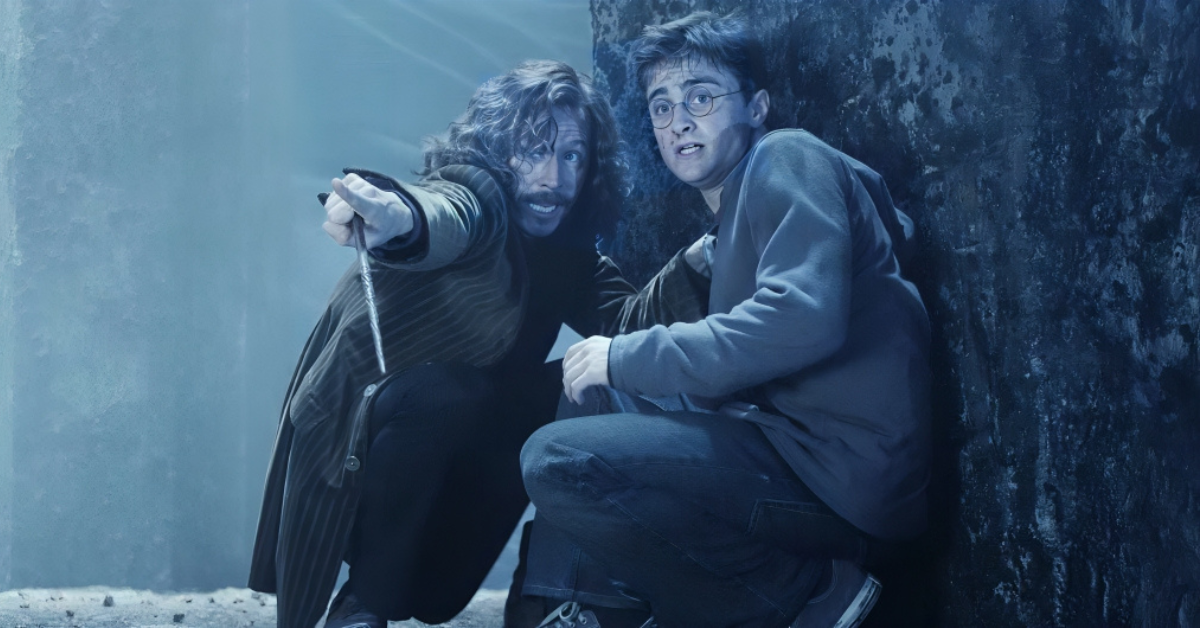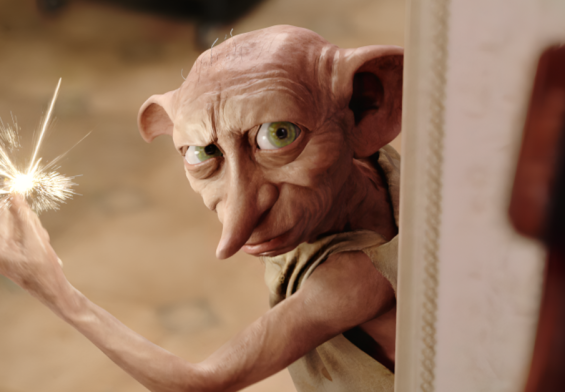
For centuries, the dark art of creating Horcruxes has fascinated and terrified those who delve into the depths of magical history. The common narrative credits Herpa the Foul, an infamous dark wizard of ancient Greece, with pioneering this sinister method of achieving immortality.
However, the truth is that the origins of the infamous Horcrux may lie shrouded in even darker corners of history. The Hogwarts Library has a vast collection of magical literature that fills its rows upon rows of bookcases.
And beyond that, there exists the restricted section, a mysterious and highly guarded area, accessible only with a note of permission from a professor. This section houses some of the most dangerous and advanced books on dark magic, ancient spells, and powerful enchantments.
The books here are often imbued with their own magic, sometimes reacting to the touch, emitting strange noises, or even resisting being opened. It’s a place of both great knowledge and potential peril, where one spell could lead to unforeseen consequences.
But what if I told you that some books were too dark and evil for the very section created to house dark books? Stashed away in the Hogwarts Headmaster’s office lies a book too evil to be allowed in the Hogwarts Library, one that even the restricted section could not contain.
This book, which contains pages filled with the darkest and most forbidden spells, curses, and rituals ever conceived, contains magic so potent and malevolent that it could corrupt even the most virtuous wizard.
And I think this book, and the dark wizard that wrote it, hold the keys to unlocking the true secrets behind Horcruxes. Today we will peel back the layers of the darkest wizard you’ve never heard of.
Recommended for You:- The Most POWERFUL Potion Maker Nobody Talks About
- How Muggleborns Are Magical and How They Are Chosen for Hogwarts
- What really happened to Hagrid’s wand? The answer will shock you!
- The Shocking Truth About the Unforgivable Curses!
History
Herpo the fowl is the first wizard on record to have created a Horcrux.
A receptacle prepared by dark magic in which a dark wizard has intentionally hidden a fragment of his soul for the purpose of attaining immortality.
Herpo was an ancient dark wizard that hailed from Greece who happened to have an awful lot of similarities to Salazar Slytherin. It’s entirely unknown when Herpo walked the earth, but we do know that it was a long long time ago, as he is commonly referred to as one of the earliest known dark wizards.
He was a parcel mouth, and he created the first ever basilisk by hatching a chicken egg beneath the toad. How that process works is beyond me. But the similarities with Salazar could perhaps suggest that Slytherin was a descendant of Herpo’s.
And while Herpo is credited as having created the first Horcrux, what’s surprising is that we actually don’t know much about it. The statement that he is the original creator of Horcrux is is where the trail of information stops.
We don’t know when he made it, what it is or if and when it was destroyed. And the next credited Horcrux creator, who came along many centuries later, is another descendant of Slytherin’s, a young boy by the name of Tom Riddle.
It would be pretty safe to state that Voldemort is the individual most commonly associated with Horcruxes, not Herpo, despite Herpo being the first to create one. And that’s probably just because Voldemort, whose main objective in life was to achieve immortality, ultimately created SEVEN of them.
A ring, a diary, a cup, a locket, a diadem, a snake, and a boy. But today I’m going to put forth the idea that neither of these two dark wizards should be given credit for Horcrux creation, and that all of the credit should be directed towards another dark wizard by the name of Owl Bullock.
Owl Bullock
The name Owl Bullock probably isn’t going to resonate with a lot of you, and in truth, there isn’t a lot of information out there on this dark magic pioneer. But what we do know about Owl is that he wrote a little book by the name of Secrets of the Darkest Art.
This book, which was once kept in the restricted section of the Hogwarts library, was deemed inappropriate by Dumbledore due to its detailed information on various forms of dark magic, one of them being, you guessed it, Horcruxes.
And so Dumbledore, who was very strict about preventing students from accessing this forbidden knowledge, removed the book from the library and stored it in his office to ensure its contents would not fall into the wrong hands.
However, despite its removal, the book played a crucial role during the Second Wizarding War, with Hermione Granger managing to summon the book in 1997, before leaving Hogwarts for the year -long quest to destroy Voldemort’s Horcruxes.
The Secrets of the Darkest Art was filled with a vast collection of the darkest forms of magic, but most importantly, it stood out as the only known book providing in-depth insights into Horcruxes, detailing the procedure for their creation the detrimental impact on the creator’s soul, and emphasizing that only through genuine regret and penitence could the soul be restored, an excruciating process that could prove even fatal.
This process, which defies the natural order of life and death, is considered one of the most abominable practices in the wizarding world. The very existence of this book is a testament to the depths of human depravity.
Furthermore, its content is not just forbidden, but reviled, a collection of dark secrets that have the power to corrupt and destroy the soul of anyone who dares to delve into its wicked teachings.
The book’s evil is so palpable that even those who seek it for noble purposes, like Hermione Granger, find themselves repulsed and horrified by its contents, highlighting its truly insidious and corruptive nature.
But the most important takeaway for me here is that Owl Bullock wrote the instruction manual on Horcruxes, but is not credited as the original Horcrux creator.
So while Herpo the Foul is traditionally credited as the original creator of Horcruxes, I think that there is a compelling argument that Al Bullock, author of Secrets of the Darkest Art, should be recognized as the true inventor of Horcruxes.
I say this because Bullock’s comprehensive instruction manual in Horcruxes demonstrates not only a profound understanding of the process, but also a level of expertise that arguably surpasses that of Herpo.
First of all, Bullock’s work on Secrets of the Darkest Art goes beyond mere theoretical knowledge. It is a detailed, practical guide that meticulously outlines each step required to creator Horcrux. This level of detail suggests a deep and thorough understanding of the dark magic involved.
Secondly, the creation of an instruction manual implies a systematic and methodical approach to Horcrux creation. Bullock’s ability to articulate and document the complex and esoteric procedures indicates not just a mastery of the subject, but also an innovative spirit that pushes the boundaries of dark magic.
Thirdly, it’s highly unlikely that Bullock could have written such a detailed and comprehensive manual without first -hand experience. The intricate and dangerous nature of creating a Horcrux requires precise understanding and skill, which strongly suggests that Bullock himself must have successfully created one or more Horcruxes to gain the expertise necessary to write Secrets of the Darkest Art.
I don’t think that Bullock just figured it out first, I think that he actually did it first. While Herpo the Foul may have been the first to experiment with Horcruxes, I think that it is Al Bullock who should be credited as the true inventor.
Bullock’s Secrets of the Darkest Art represents the culmination of knowledge, expertise, and innovation in the field of Horcrux creation, and by writing the definitive instruction manual, Bullock not only demonstrated a complete and sophisticated understanding of the process, but also ensured that this dark magic could be replicated and utilised by future generations.
Bullock’s contribution to the field of dark magic is unparalleled, warranting recognition as the true inventor of Horcruxes, and marking him as one of the most sinister practitioners of dark magic in wizarding history.
His work on Secrets of the Darkest Art not only demystified the process of creating Horcruxes, but also laid the foundation for future dark wizards to exploit this malevolent practice.
By systematically documenting the steps and intricacies involved, Bullock provided a comprehensive guide that made the creation of Horcruxes accessible to those willing to delve into such depravity.
Moreover, Bullock’s manual has had a far -reaching impact, influencing the course of wizarding history in ways that Herper the Fowl’s initial discovery did not. The dissemination of Bullock’s detailed instructions allowed for the proliferation of Horcrux creation, amplifying the spread of this dark magic and its consequences.
The very existence of multiple Horcruxes, such as those created by Voldemort, can be traced back to the knowledge Bullock meticulously compiled and shared. This legacy of evil, propagated through the ages, highlights Bullock’s profound influence on the dark arts.
Bullock’s willingness to document and share such forbidden knowledge also underscores his audacious disregard for the ethical boundaries that govern the magical community. His actions exemplify a level of ambition and ruthlessness that sets him apart as not just a scholar of dark magic, but as an active and malevolent force within its ranks.
And by codifying the darkest of magical practices, Bullock ensured that his legacy would endure, solidifying his place as one of the most nefarious figures in wizarding history. All I want to know now is, what else was in that book of his?
One last possibility that I want to explore is that Al Bullock and Herpo the Foul are one in the same. That’s right, Al Bullock was just Herpo’s pseudonym. Herpo the Foul was a dark wizard whose notoriety could have made his identity a liability, and by utilizing the pseudonym Al Bullock, he could conceal his true identity to avoid drawing unnecessary attention.
Furthermore, the nature of the content in Secrets of the Darkest Art, and the information it purportedly contained, would have been highly controversial. By publishing the book under a pseudonym, Herpo would have shielded himself from directory precautions or personal consequences associated with disseminating such forbidden knowledge.
And lastly, given Herpo’s reclusive nature and penchant for secrecy, it is possible that he would have operated under an alias to maintain his privacy and protect himself from the potential fallout of sharing his dark arts expertise with the wizarding community.
What do you think? Does it make sense to you that Al Bullock wrote a book on Horcruxes but is not credited as a Horcrux creator? Let me know down in the comment section below.



